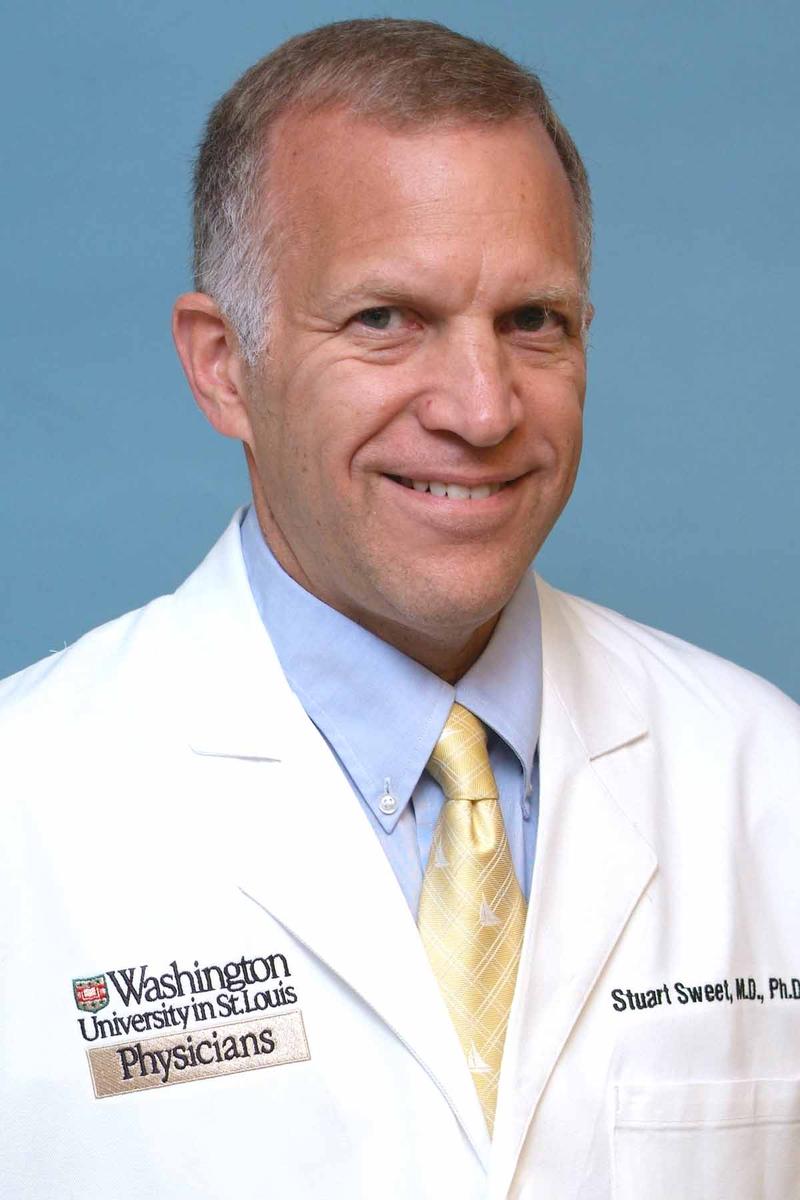 Twenty-five years ago, St. Louis Children’s Hospital instituted the only freestanding pediatric lung transplant program in the country. Its Washington University-affiliated surgeons performed the first transplant in 1990; from then until 2003 they performed nearly half of all pediatric lung transplant procedures worldwide. To date, more than 400 pediatric patients have received lung or heart-lung transplants at the hospital.
Twenty-five years ago, St. Louis Children’s Hospital instituted the only freestanding pediatric lung transplant program in the country. Its Washington University-affiliated surgeons performed the first transplant in 1990; from then until 2003 they performed nearly half of all pediatric lung transplant procedures worldwide. To date, more than 400 pediatric patients have received lung or heart-lung transplants at the hospital.
Since the program’s inception, however, significant changes have occurred in the patient population served.
“Children with cystic fibrosis and pulmonary hypertension made up the majority of lung transplants in the early years of our program,” says Washington University physician Stuart Sweet, MD, PhD, medical director of the Children’s Hospital Lung Transplant Program. “Advances in medical therapies have greatly reduced the numbers of these children requiring transplantation. The majority of today’s patients needing lung transplants are those who made up the minority in the past—those on ventilation because of neonatal lung disease, significant infections or lung injuries, and progressive lung disease of unknown origin. These are the sickest patients and the most challenging to keep healthy until donor lungs become available.”
For that reason, Dr. Sweet articulates a vision of providing children with lung failure better forms of long-term support that will push past the boundaries of traditional mechanical ventilation and extracorporeal membrane oxygenation (ECMO). Delivering that vision requires strengthening partnerships beyond pulmonologists and cardiothoracic surgeons to include intensivists and the experienced critical care support staff who can deliver care for patients with end-stage lung disease at whatever level they need.
“Mechanical ventilation is a double-edged sword. It doesn’t mimic the natural mechanics and physiology that create a vacuum inside the chest that sucks air into the lungs. Instead, mechanical ventilation uses positive pressure to push air into the lungs. That difference in physiology contributes to the deterioration of lungs already being injured by the underlying disease process,” he explains. “The last resort, ECMO, comes with blood thinners to keep the circuit from clotting off. But even with these medications, patients are placed at significant risk from clots being thrown into other parts of the body, including the brain.”
Dr. Sweet and his colleagues in cardiothoracic surgery plan to build on their experience with strategies involving other ways of infusing blood with oxygen, removing carbon dioxide, or both.
“The technology is evolving so that ultimately anticoagulation won’t be needed and the resistance of the extracorporeal membranes will be low enough to allow blood flow without the need for external pumps,” he says. “The eventual goal will be mechanical support that doesn’t require these patients to remain in intensive care or even in the hospital.”
Another strategy for improving care is understanding why patients develop bronchiolitis obliterans following lung transplantation, which leads to chronic injury of the lungs and ultimately lung failure.
“Washington University is the coordinating center for the only multi-center clinical trial currently underway for pediatric lung transplant. In this study, we are testing a novel strategy of using drugs currently available to see whether or not interfering with a different part of the immune system at the time of transplant reduces the risk of the late complications related to development of antibodies directed at the transplanted lungs,” he says.
The final—but certainly not least—action going forward is Dr. Sweet’s commitment to continuing to ensure that children are treated fairly within the organ allocation systems in the United States.
“The logistics of how frequently adult lung donors become available compared to the numbers of candidates works fairly well for that age group,” he says. “But young children or adolescents who need a smaller set of organs are in competition with adults who may or may not be in greater need. It’s imperative that we continue advocacy efforts to ensure children have equal standing in terms of organ allocation.”
He concludes, “These strategies—advanced ventilation capabilities, reducing lung transplant failure and fair organ allocation—are vital for maintaining Children’s Hospital’s leadership in the field of pediatric lung transplantation.”
To learn more about the lung transplant program, or to speak with Dr. Sweet, call Children’s Direct at 800.678.HELP (4357).










